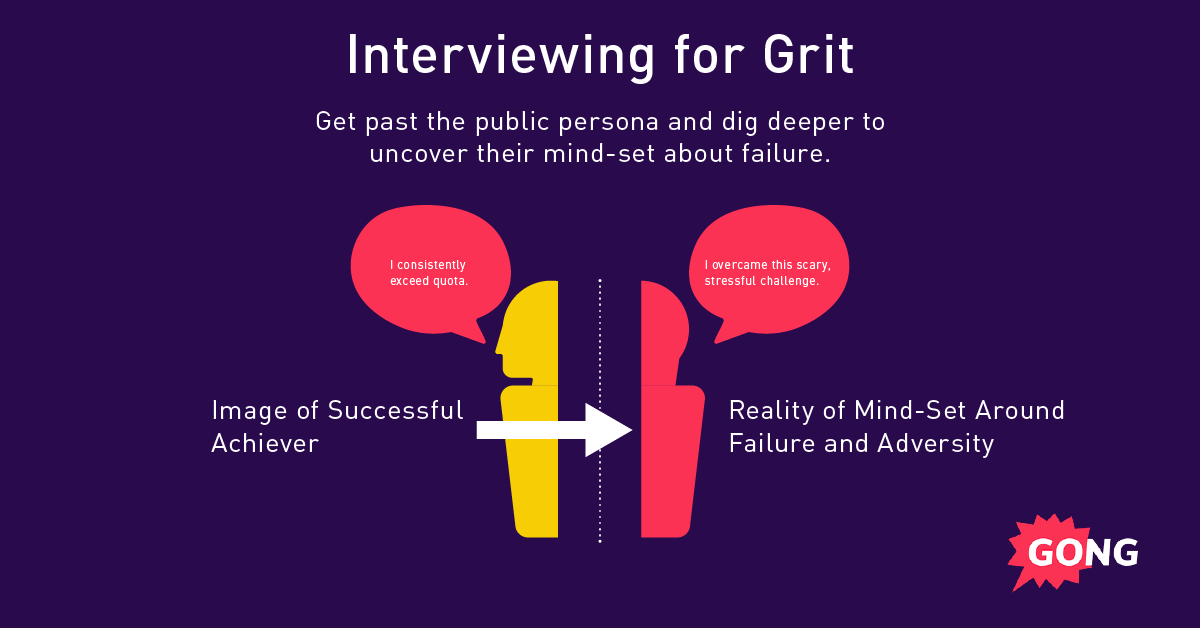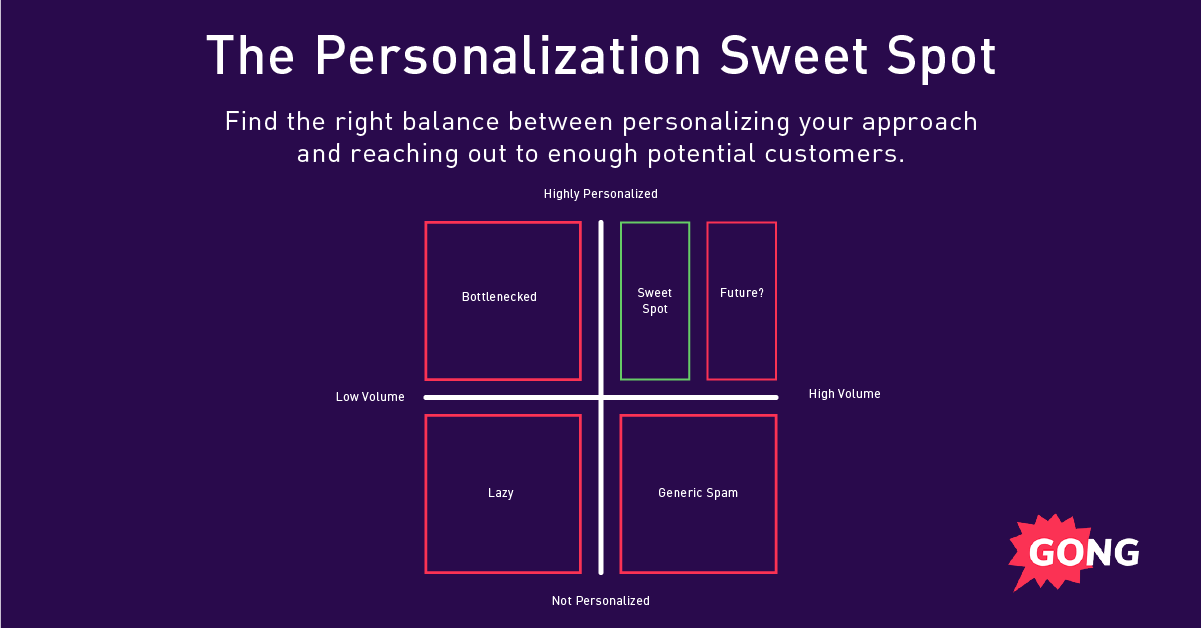Josh Allen: Your Ability to Handle Failure Determines Your Success
January 13, 2020Why must we all get more comfortable with being uncomfortable?
How can you select for grit and tenacity when hiring?
What’s the biggest hiring mistake to avoid?
On a recent episode of the Reveal podcast, we connected with CRO at Drift, Josh Allen, for answers to these and other questions that are top of mind for revenue leaders.
Here are the key takeaways and highlights from that episode.
Hiring for Character
I focus on the intrinsic characteristics. So things that are either extraordinarily difficult to move, like curiosity. If you’re not a naturally curious person who wants to dive in and ask questions and learn more about the business, because that’s how you’re built and that’s what makes it fun for you. If you’re scaling a big org, to take the time to teach somebody how to be curious to be successful in selling is not a great use of a manager’s time.
So the way my background informs is: I think a lot of the characteristics that went into a blue-collar lifestyle as it relates to work ethic and drive and in particular, resiliency. How much grit you have to handle a bad day, week, month, or quarter. You learn those things from that type of background.
It’s hard to just pinpoint a background and say, “Because of their background they’re going to be successful.” So we have to interview for those characteristics and try not to go in with a preconceived bias for how somebody’s going to be based on how their resume reads, what town they grew up in, or where they went to college. We try to suss out as much detail as possible from the individual themselves, and then from back-channel references and talking to people who’ve worked with them in the past.
For us here at Drift, [CRO is] really a fancy title for head of Sales. My responsibility is really sales motivated, and then partnership and alliances within the organizations. It’s, “What’s driving revenue for us?”
Be Uncomfortable
The one mantra I’ve held onto since the time I first saw it, which was actually on the wall of a CrossFit gym in Dublin, Ireland that I was a member at when I lived over there. And it just said, “Get comfortable with uncomfortable.”
It’s the thought that growth happens on the edges of your comfort zone. It’s not being inside. It’s once you start to eke out of where you’re comfortable, that’s where you learn, that’s where you develop, that’s where you grow. And that’s both a mental exercise and a physical exercise.
The ones who are most successful in those types of organizations are the ones who can step outside their comfort zone so that they’re able to tap into that growth.
Selling a New Category
I think with category creation and the sales process, essentially you’re selling twice. You’re really helping somebody to understand why the category matters to them. For us, we sell the idea of conversational marketing and how it transforms the digital experience by engaging with more of their potential buyers. And then, underneath that is, “And let’s talk about how Drift is a potential solution for that.”
So you have to sell both the space and the product. We do get people now who come in and understand what the category means, and why it matters. But a year ago, that wasn’t the case. This was still very much an emerging category, and still is today.
You’re not selling a product, you’re solving a problem. It doesn’t matter what you’re selling. You’re essentially trying to figure out if the person you’re talking to has a problem that whatever you’re selling can help solve. And so it’s about taking a problem and matching it to a solution.
Data Breakout—Build a Breakthrough Product and Business Model
Category creation is a hot topic right now, and for good reason. Some of the most well-known and successful companies, like Apple, Salesforce, Tesla, and in the B2B space, Qualtrics and Drift, are category creators. With hopes of attaining similar success, more companies are attempting to carve out their own category.
By Harvard Business Review’s definition, creating a category is building a solution around a problem people did not know they had, or did not know they can solve.
The emphasis should be on creating the first high functioning flywheel, which is the combination of a breakthrough product and a breakthrough business model. The secret ingredient is the ability to predict category demand.
So, how does it really play out in reality? The benefit of becoming a flywheel is supported by HBR’s analysis of the Fortune 100 fast-growing companies over the last decade. Of the roughly 600 unique companies across the 10 years that they analyzed, companies with the flywheel accounted for only 22% of the companies, but drove 52% of the revenue growth and 72% of the market capitalization growth.
So it’s clear that category creators experience much faster growth and receive much higher valuations from investors than companies bringing only incremental innovations to market.
True Grit
For resiliency, for example, it’s asking questions around, “What’s the most challenging thing you’ve gone through in your career?” You’re going to hear answers that range from, “We ran out of cold brew,” to, “I was let go the first week I got there because they downsized the team unbeknownst to me. I was without a job for six months.”
I want to hear what people have gone through as an indicator of what they are able to take and what their perspective is. Because if you have the right perspective, things like territory changes, or a change in quota, or a change in role and how we sell—they’ll fall right off somebody’s back.
And it’s also setting the right expectations. There are people who succeed in high-growth companies, and there are people who will struggle because the change management is so rampant in a hyper-growth company that if you’re not comfortable with the idea that your job may change six times in two years, then these aren’t the right companies.
So getting an understanding of what they’ve experienced, what they’ve been through, what resonates as hard to them is what I try to dig into.

It’s Not About Liking Someone
We all have to continue to improve in the hiring process. That’s something that never stops. It doesn’t matter how long you’ve been doing it, how many companies you’ve been with, how many times you’ve been trained. You always have to continue to improve there.
I think the biggest mistake I see is mistaking liking somebody for them being a good fit for the job. Just because somebody is someone you’d want to go grab a coffee or a beer with doesn’t necessarily mean they’re going to come in and be a great salesperson, or a great marketer, or a great customer success rep.
You’ve got to be able to be truly objective in your question asking, and make sure that the answers that you’re getting back line up with the skills that you need to be successful in the job. And if they don’t line up, and they’re a nice person, that’s okay. There are lots of nice people who aren’t the right fit for the role. It’s the willingness as a hiring manager to be able to truly have the patience to find the people who are going to be great.
The Trend Toward Personalization
There seems to be heightened awareness around personalization of outreach. So it’s actually focusing on really good, thoughtful persona- and individually-based messaging.
Whether you’re a BDR or a salesperson, if you’re trying to get a meeting with somebody because you think you can potentially solve a problem for them, blasting an email out to a thousand people isn’t a great way to do that.
But actually taking the time to understand who they are, and even if you are venturing a guess at what types of problems they might be facing, and can bring something of value to the table, with this concept of giving and giving and giving before you actually get anything in return.
I’ve seen that start to change in the last couple of years, especially with some of the marketing and sales technology companies in particular, that have decided to take a more personalized and conversational approach to engaging. And that is wildly different from even four or five years ago, when it was still very much focused on volume through marketing automation, or BDRs making a hundred calls.

I think [personalization] is a welcome change and allows people to be themselves, and get kind of creative with their outreach. You can’t be perceived as better as a salesperson unless you’re perceived as different, so it’s nice to see that change happening.
Subscribe to Reveal: The Revenue Intelligence Podcast
Every week, we interview senior revenue professionals who share their insights on how they leverage revenue intelligence to drive success and win their market.
You’ll hear how modern go-to-market teams win, close revenue with critical deal insight, and execute their strategic initiatives—plus all the challenges that come along with it.
Listen now at gong.io/podcasts.